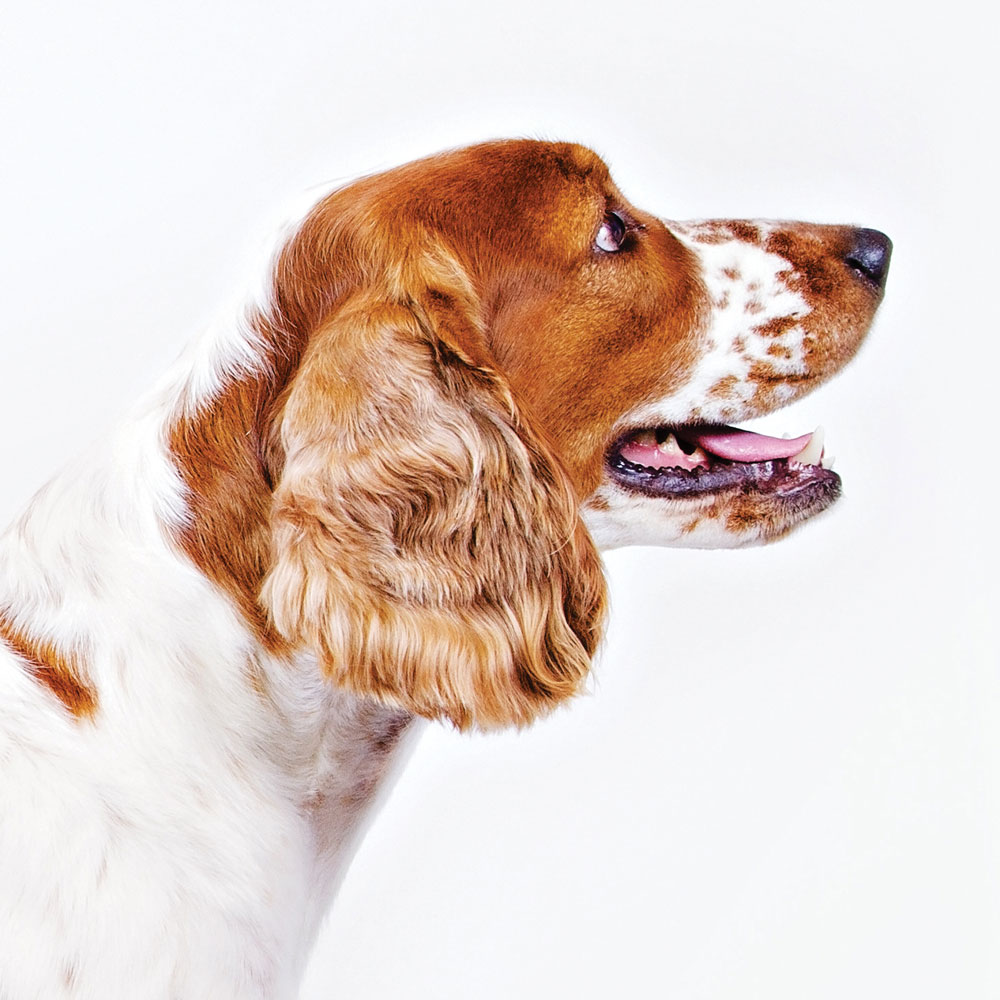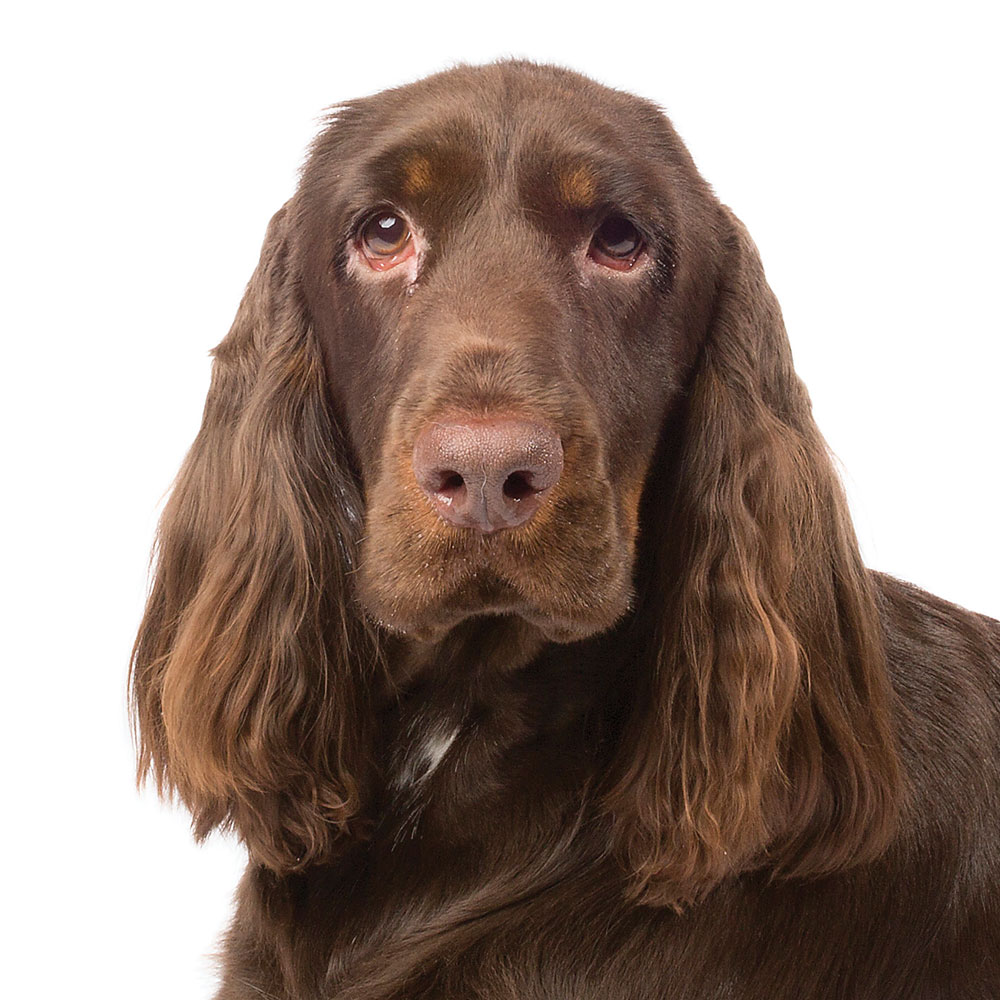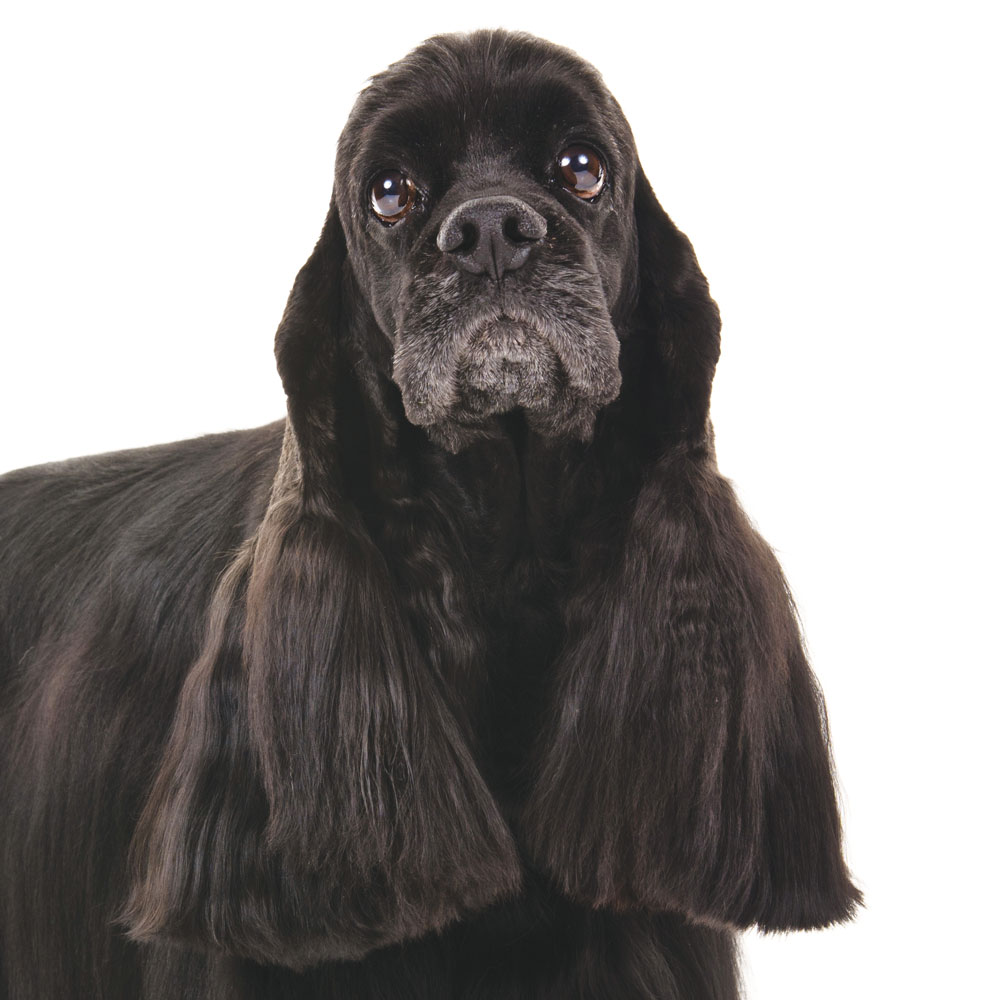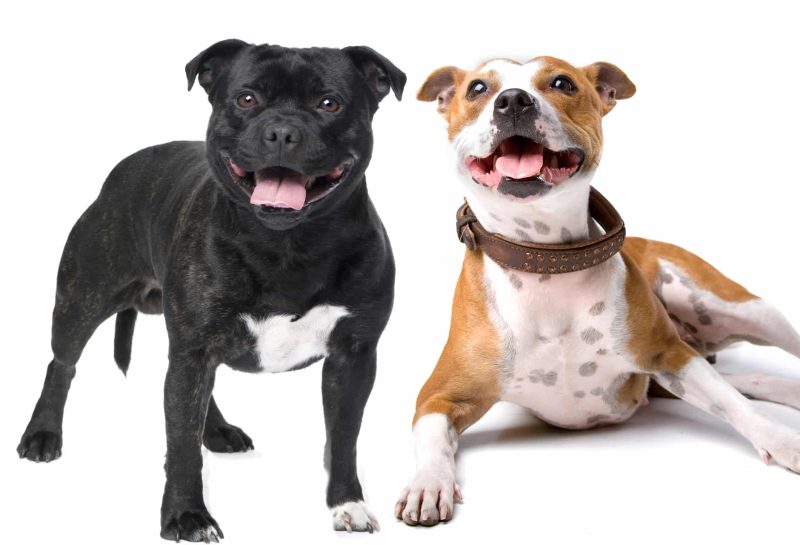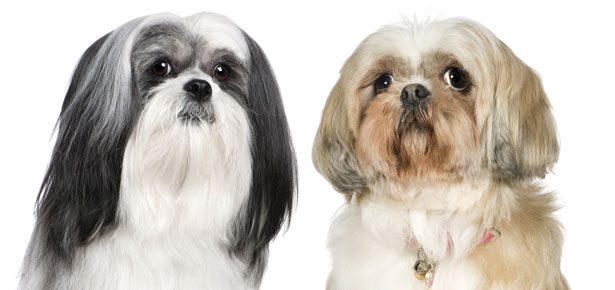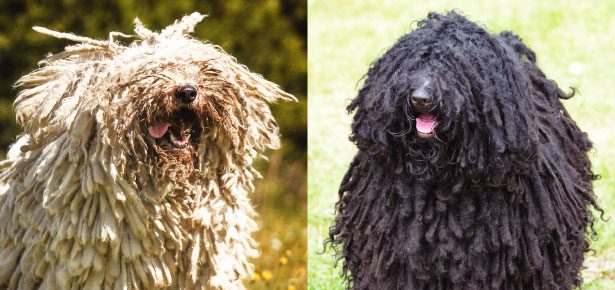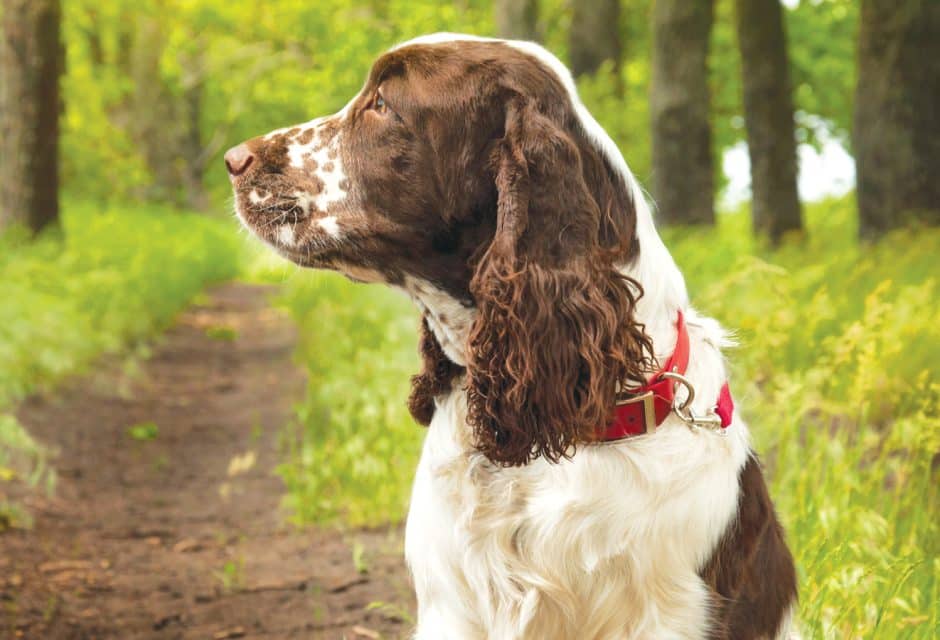
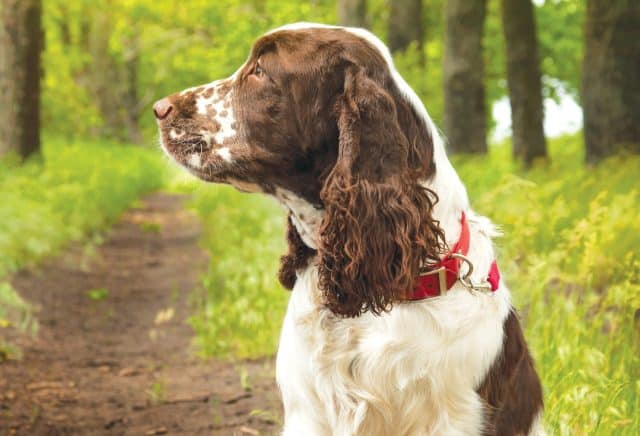
The English Springer Spaniel
Full of energy, tender-hearted—this lovable bird dog combines brains and obedience with stamina, energy, and sweetness
You know him to see him. The English Springer Spaniel is a popular family companion—26th most popular of all purebreds in the US—with a sweet, friendly disposition. But did you know just how much “game” there is in this breed?
Most Popular Dogs in the US
According to the most recent AKC registration statistics (2022)
[1] French Bulldog
[2] Labrador Retriever
[3] Golden Retriever
[4] German Shepherd
[5] Poodle
[6] Bulldog
[7] Rottweiler
[8] Beagle
[9] Dachshund
[10] German Shorthaired Pointer
[26] English Springer Spaniel
The Springer is a centuries-old breed whose origins, like his fellow Spaniels, pre-dates written records. It’s generally agreed that Spaniels originated in Spain (as the name suggests) and were introduced to the British Empire by Romans via trading ships.
The various Spaniels of the United Kingdom started developing centuries ago, with some recorded as early as 300 A.D. in Wales. Artwork sheds light on how early the breed started to take shape, with paintings dating as far back as the 16th century featuring Springer-type dogs, most portrayed flushing game.
As a group, the Spaniels’ role was to work with hunters to bring down and retrieve game. Early on, hunters used nets, bows or birds of prey along with their dogs. After the advent of the rifle, hunting was revolutionized but Spaniels remained critically important. They became known—along with other sporting and retrieving breeds—as gun dogs.
Alongside their hunter companions, Spaniels moved though the tall-grasses and brush and would flush birds from their hiding spots. Then they’d point to the bird in the air and carefully retrieve it once shot down.
The English Springer was primarily developed in the counties of Norfolk and Shropshire, along with other Spaniel varieties. Early on, it was just size that differentiated the Spaniels. Within the same litter of pups, those less than 25 pounds were deemed Cockers and those over 25 pounds were called Springers. The smaller dogs were named for the game they typically hunted, woodcocks, while Springers were named for their habit of pouncing suddenly on larger game, forcing it to spring up quickly in the air.
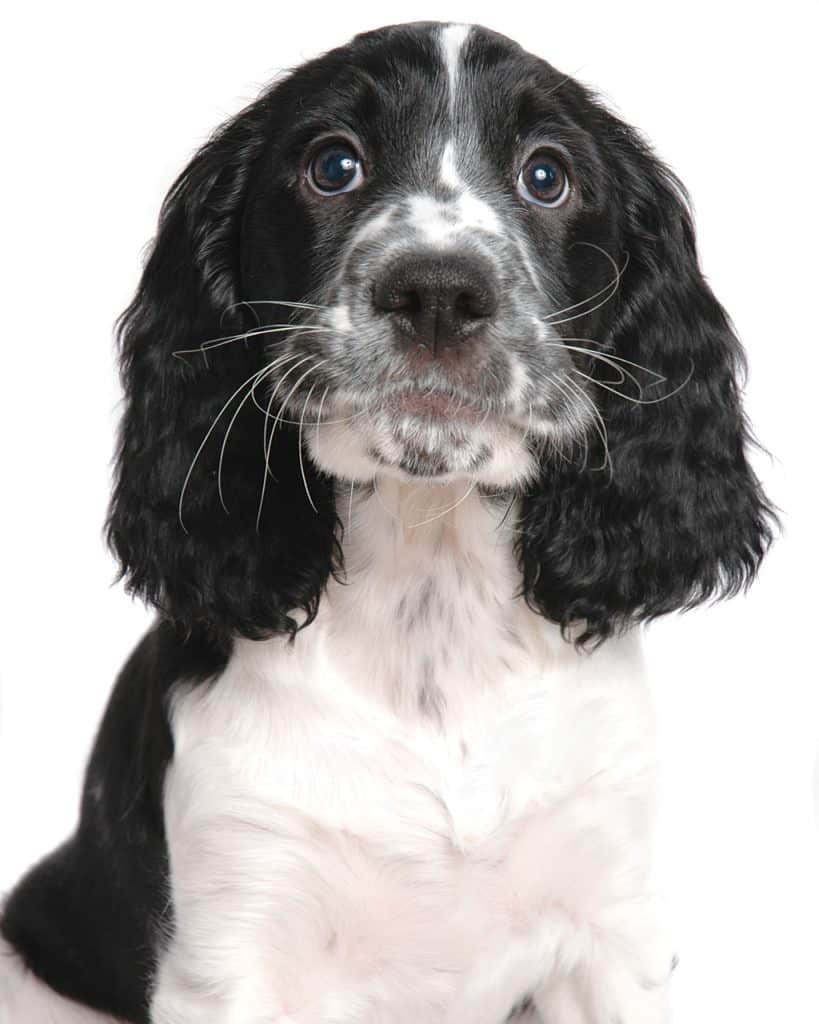
andrewhoward/Bigstock
“Natural athleticism and intelligence are matched with an intense desire to please.”
By the late 1800s, Springers and Cockers had been considered distinct for some time. English and Welsh Springers were still being shown together, but that changed in 1902, when The Kennel Club made the distinction official.
The American Spaniel Club of America was founded in 1881, but the first AKC standard for the English Springer Spaniel wasn’t created until 1927. By then, the breed’s popularity had really started to take off in the United States. Here’s why:
You hear with a lot of sporting breeds that there are the working lines and the show lines. But here’s the thing. The division between the two is nowhere more pronounced and respected than it is with the English Springer Spaniel.
For many, many decades now, within this same wonderful breed, we have two notably different types of dog, effectively doubling the number of Springer fans.
Springers that come from hunting lines have fairly coarse, short fur that is mostly white with a fair amount of brown ticking. Their muzzle is somewhat pointy, and they are hard-wired to be very active.
Those from show lines are more heavy-bodied. Their coat is longer, softer, and, instead of the ticking, features larger patches of colour against the white coat. The nose is more rounded and, while still athletic in nature, they’re generally considered less active than their field counterparts.
Of course, because there always have to be “the great ones” in any species, dual-type Springers do exist. These are dogs who are able to excel in the field, come inside for a bath and blow dry, and head back out to perform very well in the show ring.
Today, the English Springer Spaniel is a popular breed. He’s ranked 27th most popular of all purebreds in the United States, according to AKC registrations for 2019.
The AKC standard allows for an ideal height at the shoulders of 20 inches for males and 19 for females. Weights range from 40 to 50 pounds. The coat is accepted in a variety of colours and patterns, including black or liver with white markings, mostly white with black or liver markings, blue or liver roan colour, or tri-colour.

DFree/Bigstock
Celebrity English Springer Spaniel Owners
Famous English Springer Spaniel owners include Oprah Winfrey (who adopted 14-week old Springer Spaniels Sunny and Lauren from PAWS Chicago, a no-kill shelter), Princess Grace, George W. Bush, and George H.W. Bush.
Compact, muscular, and agile, this is a well-proportioned, natural breed that moves with ease and possesses a significant amount of strength and agility.
But what’s this breed like to live with?
For the answer, look no further than those soft eyes. This is a sweet and devoted family companion. In fact, the soft expression of the Springer’s eyes is so important that it’s written into the AKC breed standard.
Friendly and cheerful, his trademark tail-wag is yet another giveaway. The Springer is simply full of joy. Note: this affectionate dog bonds closely with his people. He will not thrive in a home environment where he’s left alone for long periods of time. A guard dog he is not. He may bark an alert when someone arrives, but visitors will be greeted with a friendly wag and the expectation of some form of affection.
Profile: The English Springer Spaniel
Size: Medium
Ideal height at the shoulder is 20 inches for males and 19 inches for females. Weights tend to range from 40 to 50 pounds.
Activity Level: 4/5
Above average. This active breed requires long daily walks at an absolute minimum and will thrive if you throw some activities his way. He also loves to swim!
Grooming: 3/5
He’s double-coated, so weekly brushing will help keep him looking his best and control shedding. Show-bred lines have a softer, more feather coat that requires trimming.
Heritage:
Developed in the British counties of Norfolk and Shropshire, the Springer has a long, cherished history as a gun dog and family companion.
For more information on English Springer Spaniel rescue, visit essfta.org/english-springers/rescue-information.
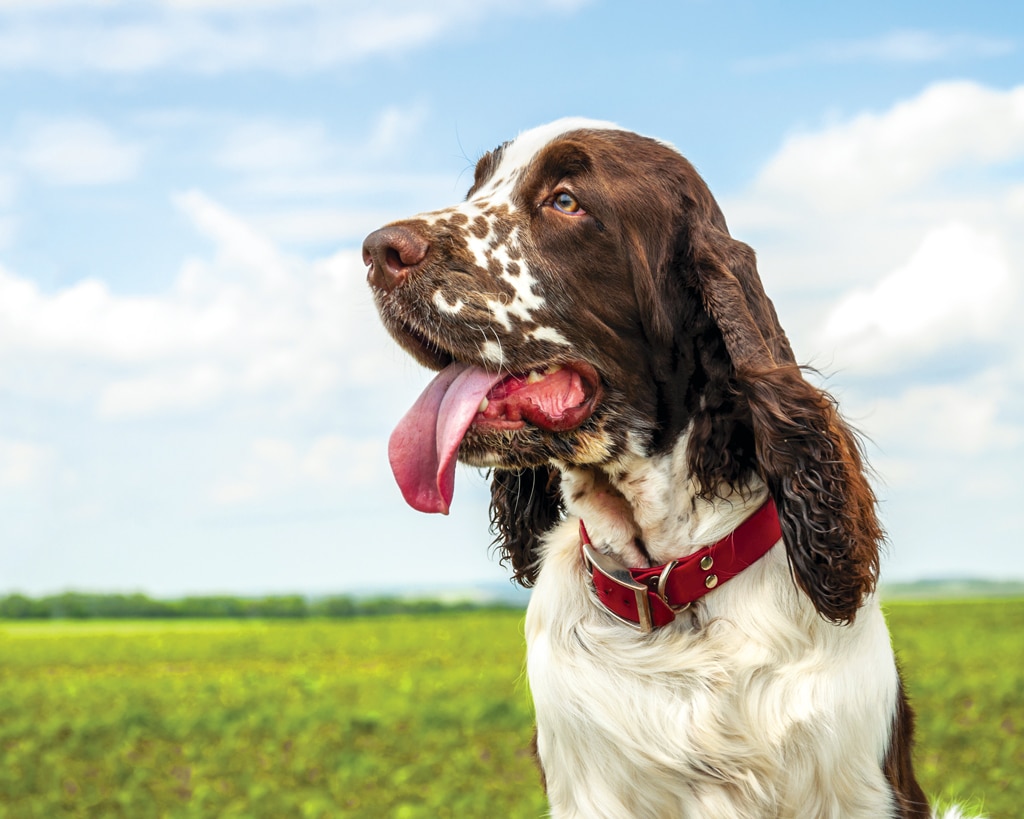
Soraz/Bigstock
The Springer is one of the most versatile breeds in the history of dogdom. Bonus? His natural athleticism and intelligence are matched with an intense desire to please. Obedience training and early socialization are important for him, as for all dogs. But he’s a quick study and is likely to be up for just about any activity you can throw his way. A well-socialized, well-trained Springer can excel at just about anything.
His exercise requirements must be met in order for him to thrive. A daily walk is an absolute bare minimum, ideally combined with plenty of playtime and a canine activity to keep him fit and content. The breed has a history of excelling in almost every sport imaginable—obedience, agility, hunt and field tests, tracking, flyball—the list goes on. He’s also a great swimmer. With his hard-wired desire to chase small game, a fenced-in yard is recommended.
As a breed, the Springer Spaniel is generally a healthy, hearty breed, but all purebreds can be prone to genetic disorders.
The Springer is a tough, sporting dog, but he’s also a devoted family companion. Full of beans, tender in heart—he may be the ideal choice for those who like to work hard and relax just the same. If you can keep up with him, his heart is all yours.
If you like the English Springer Spaniel, you might also consider the:
Welsh Springer Spaniel Field Spaniel Cocker Spaniel
» Read Your Breed For more breed profiles, go to moderndogmagazine.com/breeds
Join the newsletter and never miss out on dog content again!
"*" indicates required fields
By clicking the arrow, you agree to our web Terms of Use and Privacy & Cookie Policy. Easy unsubscribe links are provided in every email.

